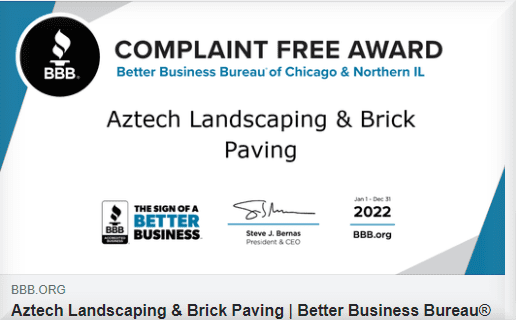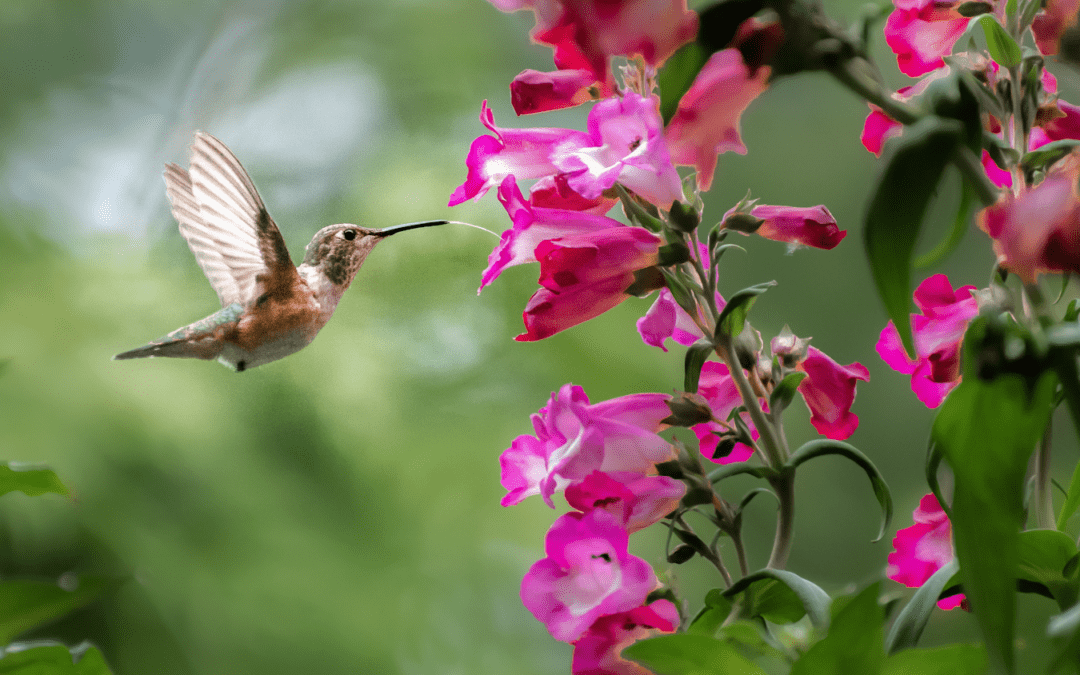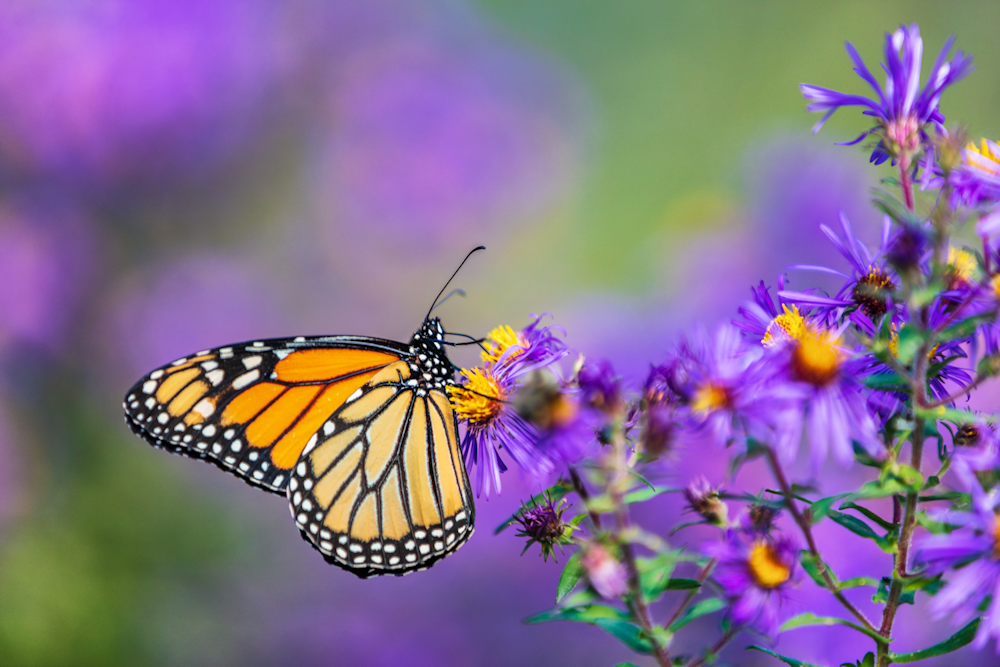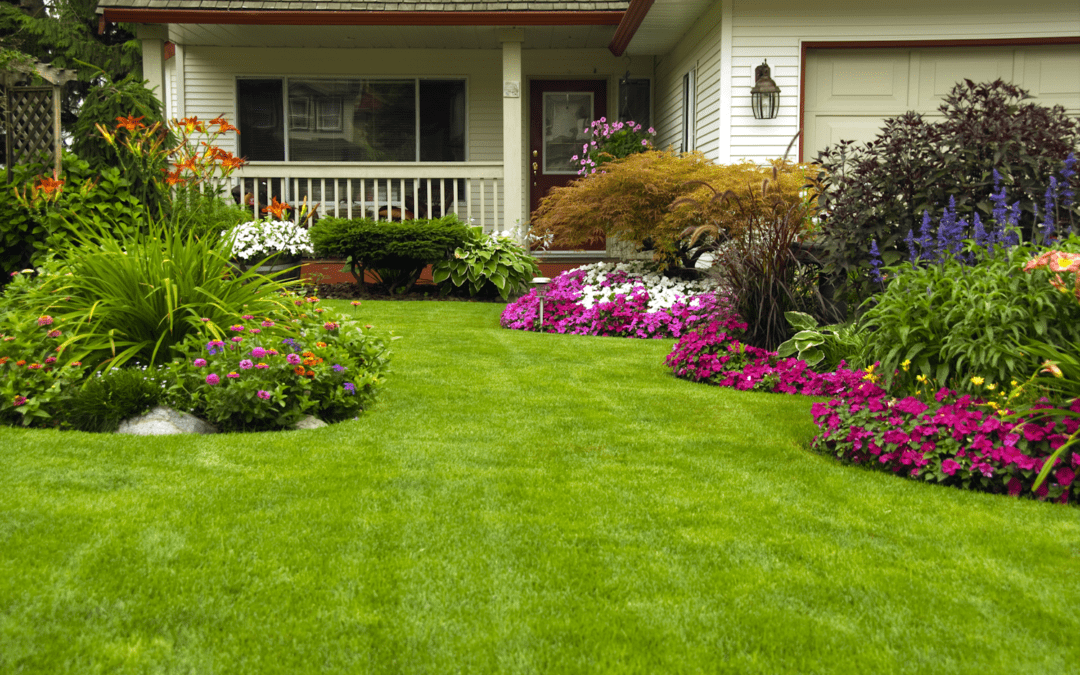Who doesn’t LIKE butterflies? Many butterflies live only a week or two, so help them make the most of their days. Plants with large, single daisy-type blossoms, such as black-eyed Susans and Mexican sunflowers, let butterflies gather nectar in one spot, which saves them time and energy.
Turn your backyard into a flying circus with annuals and perennials that butterflies can’t resist. Butterflies zero in on large beds. A hummingbird stops by for sugar water. Butterflies need liquid, too, so provide a shallow dish of wet sand where they can get salt and nutrients not found in nectar.
Keep an eye out for butterflies-to-be. Chrysalides (pupa stage, enclosed in a cocoon, before turning into a butterfly or moth) hide on outdoor structures, pots and chairs. And be prudent with pesticides. Many products kill all kinds of caterpillars, destructive or not.
Butterfly gardens attract the birds and bees, too. Most gardeners have realized these winged beauties not only play an important role in pollinating other plants, but they are fun to watch and attract! It is also incredibly peaceful and enjoyable to sit in the garden and watch vibrantly colored butterflies flutter around.
These vibrant flowers and plants provide nectar for butterflies and create a bold border for your yard. (source).
Butterfly Bush (Buddleia)
Butterfly bushes (Buddleia or Buddleja) are large, fast-growing shrubs whose flowers are irresistible to butterflies. Buddleias are easy-care plants, but they’re invasive in some areas. Look for sterile cultivars which don’t set seed and therefore don’t run wild.
Phlox
Phlox is a low-growing, spreading plant that forms a blanket of blooms all summer. Perennial varieties are great for a year-round groundcover.
Coneflower (Echinacea)
Coneflower is one of the best flowers for attracting butterflies. It adds a flashy touch of color to the late summer landscape. Plant echinacea among a low growing perennial bed where showy flowers will stand above the rest.
Lantana
Lantana produces profuse color, showing off clusters of tiny, eye-catching blooms in a variety of hues. Typically grown as an annual, it’s an excellent low hedge or accent shrub that you can also train as a standard. It attracts butterflies and tolerates heat.
Bluestar (Amsonia hubrichtii)
Blue star is a perennial that can reach two to three feet in height. It gets its name after its blue, star-shaped blooms that open up in spring.Use in masses or as a specimen plant, or in a mixed perennial border in the middle to back of the border or in a rock garden. Blue star performs best in partial shade in a moist, loamy, well-drained soil, and also tolerates full sun if provided with enough moisture.
Pot Marigolds
Pot marigolds’ blooms last up to eight weeks in the summer and are a quick-to-grow plan
Black-Eyed Susan
Black-eyed Susan is one of the great wildflowers of North America and was one of the first to become a domesticated garden flower. Its showy golden yellow flower head with black centers are a visual delight.
Blazing Star Flowers (Liatris spicata)
The blazing star is an interesting perennial which produces 1 to 3 foot-tall spikes of bright purplish-pink or white flowers in late June to early fall. It is an ideal plant to grow in a butterfly garden.
Heliotrope
Heliotrope has a sweet, pungent scent that some liken to the smell of cherry pie. ‘Dwarf Marine’ features a royal purple color. It is large flowered yet compact and has attractive, dark green foliage and a bushy habit.
Lavender
Lavender is a perennial favorite for gardeners and butterflies alike, producing tall, fragrant spikes of purple blooms. Hailing from the Mediterranean, it’s drought-resistant and can take the heat.
Swamp Milkweed
The only food source of Monarch caterpillars and a preferred source of nectar for many butterfly species, including the adult Monarch, there are over 100 varieties of milkweeds in North America. Hardy Swamp Milkweed, shown here, is a good choice for Zones 3-8 but prefers moist conditions till well established.
Butterfly Weed (Asclepias tuberosa)
A type of milkweed, drought-tolerant butterfly weed isn’t picky about growing conditions. Give it a sunny spot, and you’ll be on your way to a flowery summer. Butterflies, bees and other pollinators can’t resist these bright orange blooms. This perennial pushes through soil in late spring, well after other plants are up and at ‘em. It’s a good idea to mark clumps with a stake to avoid early season digging in that spot. Hardy in Zones 3 to 9.
Flossflower (Ageratum)
Flossflower is an annual that is a member of the aster family. The plants grow easily from seed and with enough water and a little shade, will bloom from midsummer to frost.
Chocolate Cosmos (Cosmos atrosanguineus)
This delightful cosmos boasts dark maroon flowers that—as you might guess—are chocolate-scented.
Agapanthus
Agapanthus comes to life in late summer. It features large, elegant, deep blue bell-shaped blooms that are clustered together on tall, sturdy stems. These showy flower heads stand well above the plant’s foliage.
Aster
Aster is an herbaceous perennial that comes in a wide variety of colors. Its daisy-like flowers bloom in late summer and autumn in a sunny site.
Salvia
Salvia produces fragrant foliage and tall spikes of flowers, usually in shades of purple or white. Its nectar attracts butterflies and hummingbirds.
Sea Holly (Eryngium tripartitum)
Sea holly has blue green stems with masses of small, metallic blue flower heads on tall, 4-foot stems. Sea holly is a delight to butterflies a tough plant that is very tolerant of drought.
Hollyhocks
Hollyhocks a favorite for cottage gardens because of their loose, carefree look and beautiful, large blooms that attract bees and butterflies.
Sunflowers
Cheerful, colorful sunflowers attract both bees and butterflies to the garden.
Sedum
Sedum has thick, succulent leaves that withstand drought and rainy weather. The flower buds form early and remain attractive well into winter. Low-growing types are perfect for rock gardens, while taller varieties thrive in perennial borders.
Goldenrod
Goldenrod is a perennial with bright yellow flowers that add color to a late summer garden.
Local Spots to find Butterfly Gardens:
Butterfly Garden: E 9th St & S Washington St, Lockport, IL 60441
Peck Butterfly House – 4038 Kaneville Rd, Geneva, IL 60134
The NENA Butterfly Garden – 166 Ann St, Elgin, IL 60120
Chicago Botanic Garden – 1000 Lake Cook Road, Glencoe, IL 60022
Lyman Woods Nature Center – 901 31st Street Downers Grove, IL 60515
North Park Village Nature Center – 5801 N. Pulaski Rd. Chicago, IL 60646
Nature Boardwalk at Lincoln Park Zoo
Powderhorn Marsh and Prairie – Burnham, IL 60633
Montrose Point – Lincoln Park
Rainbow Beach – 3111 East 77th St. Chicago, IL 60649
Sources:
https://www.midwestliving.com/garden/ideas/how-to-attract-butterflies-to-your-garden/
https://news.wttw.com/2019/06/11/10-prime-spots-see-butterflies-chicago

























